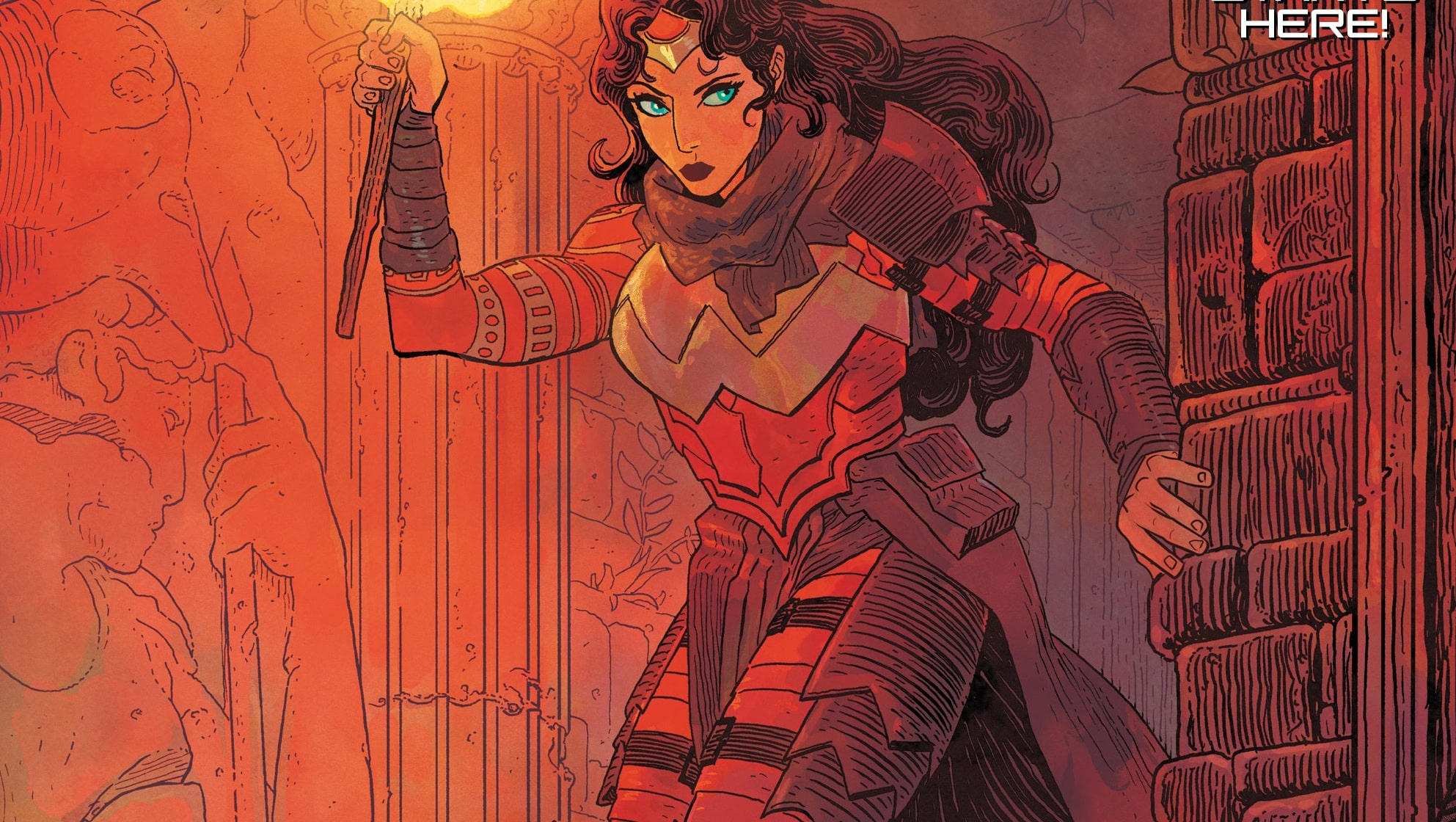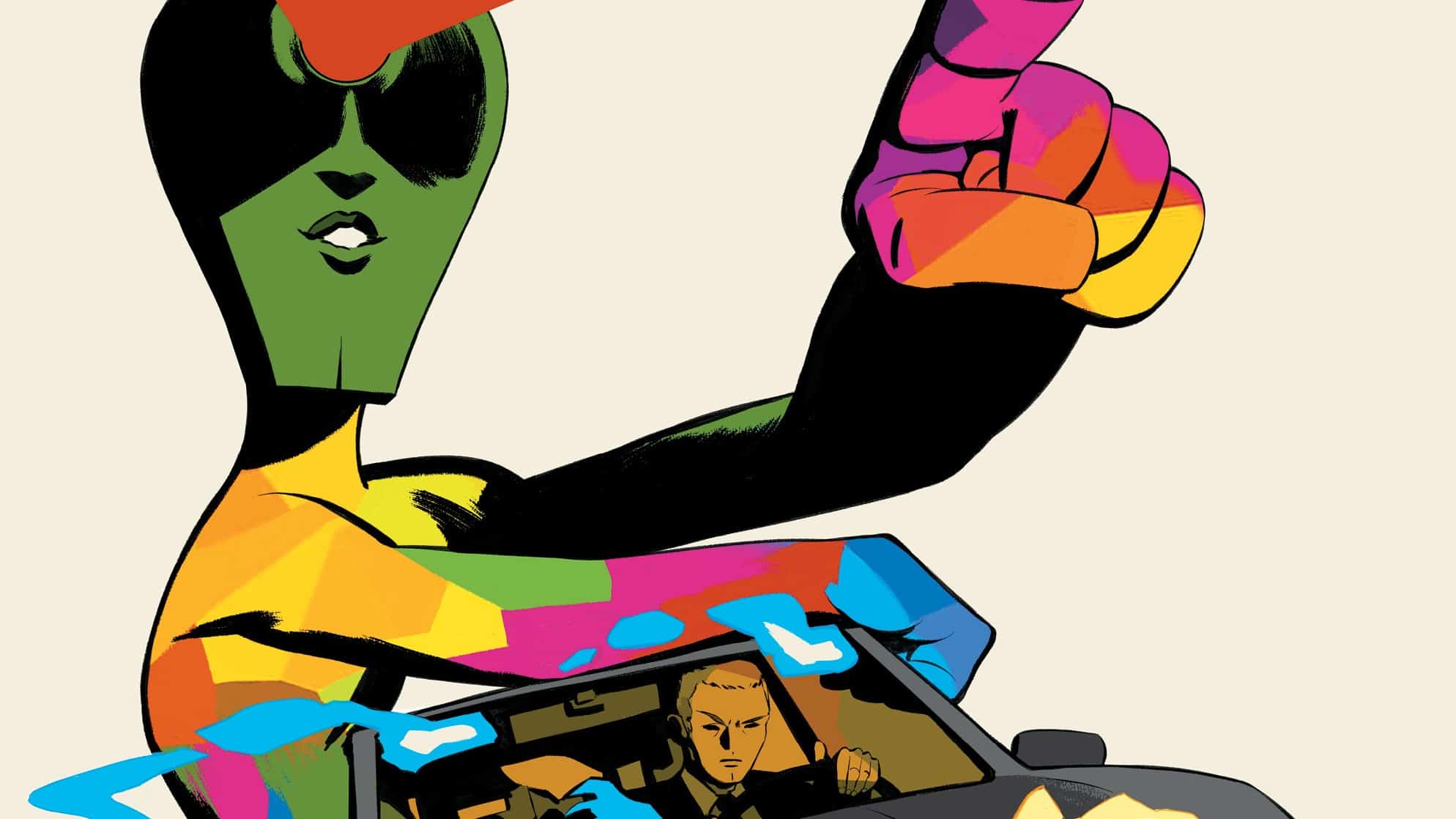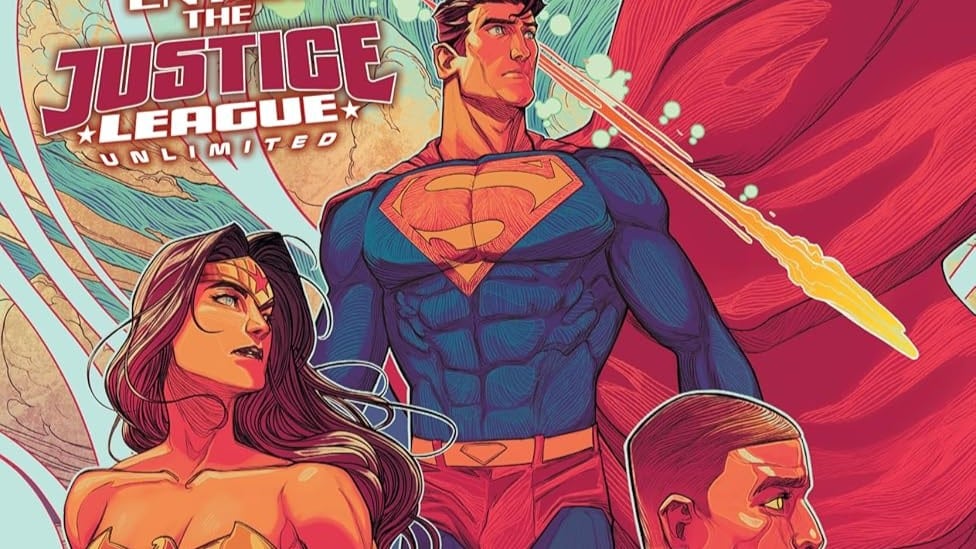Welcome back to Talking Absolute…, where we at ComicsXF analyze the Absolute DC storylines, controversies and themes that have captured our imaginations each month. Today, we’ll be covering the titles released in the back half of May, talking teenage angst in Absolute Flash, gaseous villains in Absolute Wonder Woman and humanity’s clouded judgment in Absolute Martian Manhunter.
Absolute Martian Manhunter #3

Written by Deniz Camp, illustrated and colored by Javier Rodriguez, and lettered by Hassan Otsmane-Elhaou.
On Aug. 4, 2024, a violent mob in Rotherham, South Yorkshire, set a hotel housing refugees on fire. Stoked by fascists capitalizing on misinformation about a murder by an immigrant in Southport, some rioters claimed their actions were in response to the threat of immigration on the U.K. Others, including many teenagers, said they did not even know why they were there. The perpetrators were widely condemned, and faced harsh jail sentences amid a current of castigation of angry working class white men. Just under four months later, on Nov. 29, the Home Office announced it had terminated its contract with the hotel chain, citing the effect on the community as the reason.
“In making this decision the government has thankfully recognised the problems with the hotel, and given assurance to neighbouring residents who have understandably been concerned that such trouble might be repeated again in the future.”
In May 2025, the right-wing Reform Party largely responsible for stoking the rioters’ violence won more local council seats than any other party. In response, the Labour government announced its new immigration policy, accompanied by a white paper titled “Restoring control over the immigration system.” This has cemented the direction of travel on immigration from a party typically associated with liberal leanings, and for the nation generally. Rather than address the root cause of the shameful actions of the riots, it enshrines the hatred underpinning them in law, begging the question: How did we learn all the wrong lessons from migrant hotels being burned down?
As well as being extremely personal to me as a resident of South Yorkshire, I’m bringing this up because it is the sort of question Deniz Camp and Javier Rodriguez are exploring in Absolute Martian Manhunter #3. Firstly, there’s a scene that directly resembles the destruction and arson of a migrant hotel. Secondly, there’s a wider thematic parallel at play organized around the metaphor of fire and smoke. The issue explores, through an event reminiscent of the 2024 U.K. riots, the tendency to obsess over (and misdiagnose) the motivations of the perpetrator rather than the human cost. This is not, as the Green Martian will argue, a human failing; rather, it is the effect of the smokescreen of fear instigated by anti-immigration rhetoric. Its intent? To divide us by creating the illusion that our home itself is under threat.
Camp and Rodriguez seed this argument into the issue’s inciting incident(s) — 24 ordinary citizens immolating 24 homeless people in entirely unconnected crimes. Camp deploys a metaphor connecting “smoke” with truthhood to illustrate the obfuscatory effect violence of this nature can have on human perception. John Jones’ observation that under the “gray clouds [that] gather round the edges … you can almost make out the shapes of people,” provocatively evoking the dehumanization of victims. This theme is developed further in the cross-examination scene. Each perpetrator possesses different motivations and reasons, which Camp’s dialogue characterizes as vague, confused thoughts through ellipsis. All of them are represented by Rodriguez as having clouds over their minds, literalizing the concept of clouded judgment. In many cases the perpetrators, as with the U.K. riots, are unable to attribute a cause of their actions.
This phenomenon is not just present in the perpetrators but in us as observers. Each fire has its own distinct cause, yet Detective Mayweather can’t perceive any connection between them. He instead declares them “all victims.” John Jones, through the help of the Martian, can though. The imagery Rodriguez uses to portray this message is fantastic — John observes the burning of Middleton from a distance, able to perceive the whole rather than the part, which he sees as roots connecting into a single tree.
So what’s clouding our collective judgment then? Ironically it’s the thing that should most unite us. The need for the safety of a home. In Absolute Martian Manhunter, people are literally weaponized against the most vulnerable. The Martian declares that the White Martian has “decided on tragedy.” The method of doing so is self-immolation, destruction from within by pitting people whom Rodriguez draws as unmistakeably white middle class against the homeless.
Camp uses the symbolic meaning of home to demonstrate how the very human motivation of seeking the protection and security of a home is warped by replacement theory fascist narratives. The White Martian wants to destroy individuals’ feeling of safety in their own home; to isolate them in fear. This fear tears at the fabric of communities, causing people to destroy their towns in an act of wanton (self-)destruction, destroying “not any specific home … but the idea of home.” It’s a phenomenon as old as time that is sadly still alive in the U.K. as it is elsewhere: divide and conquer.
So what truth lies in the smoke? When the White Martian says “smoke,” she means this blinding fear that obscures the truth. John Jones and the Martian’s mission statement is to reveal the message hidden behind the smokescreen. It’s Big Al’s dying thought — that everyone wants a home; a community to belong to; their inalienable right as a human being.
— Jake Murray
Buy Absolute Martian Manhunter #3 here.
Absolute Wonder Woman #8

Written by Kelly Thompson, illustrated by Hayden Sherman, colored by Jordie Bellaire and lettered by Becca Carey.
Recently freed from Hell and Hades’ clutches, Diana is back in Man’s world while humanity recovers from the Tetracide monster.
Hayden Sherman’s back with their distinct style and Bellaire’s colors. I think I won’t be able to separate their intense depiction of Diana’s eyes and such bold colors from this run! Concentric circles rule this issue as Diana shows us more of her world. She’s searching for the Amazons, and assisting her are her constant friends, the animals. Meanwhile, Veronica Cale and Dr. Poison are plotting ways to work against Wonder Woman. More accurately, Cale is working on ways to plot against both our woman with a body of wonder and Dr. Poison’s lack of one. Even in Cale’s part of the story, where panels are sharp angles and lines, rounded shapes and objects can’t help but seep in.
I continue to be captivated by Thompson’s ability to take classic Wonder Woman villains and create new ideas with them. Dr. Poison as a gaseous cloud is interesting, and I’m curious to see where that goes, as well as Cale’s assistant’s button. Cale has quite a leash on her, and I wonder if it’s not just the promise of a suit that holds her essence.
Speaking of circles, Diana’s circle of friends has a temporary home, conjured by her magic in Gateway City. Her team of Steve, Barbara, Etta and Gia has barely settled in when Diana leaves them to tend to the rattling noise distressing citizens back in the city.
This issue has a few one-liners I wish I had the chance to use myself, including “I hope you’re at peace with your creators” and “I hope whoever’s up there likes getting punched in the throat.” However, I wonder if Diana hasn’t had much experience with humanity if she didn’t expect someone to immediately pounce on using harm from the Tetracide beast as another method of destruction. We seem pretty great at just rolling one disaster into another here.
This is where Carey’s lettering effortlessly plays into the narrative, with the distracting “chk, chk, chk” of Wonder Woman’s latest test. I recommend picking up this issue for all its creativity and am intrigued to see how Diana and Dr. Poison will fare under Thompson’s pen.
— Cat Purcell
Absolute Flash #3

Written by Jeff Lemire, illustrated by Nick Robles, colored by Adriano Lucas and lettered by Tom Napolitano.
If I’d have known as a 15-year-old what I know now … that a problem shared is a problem halved; that you must cherish the love of those closest to you; and that psychic monkeys are the cure for anxiety and loneliness. These are all powerful lessons taught by Absolute Flash #3 that I’m sure speak to many people’s teenage experiences. They are the foundational principles that make Wally West so relatable, and what is really clicking for this series for me so far.
Issue #3 is where Wally West’s light-speed anxiety finally finds its counterforce; and from an unexpected source. Lemire and Robles combine to wonderful effect in this issue to transition Wally from frenetic angst to clarity and serenity by establishing a trauma bond between their protagonist and otherwise antagonist. The overarching conceit of the issue is that as Wally is fleeing Fort Fox and the pursuing Rogues, he recounts how all of the genuine connections he’s made in his life have ended in tragedy. His anxiety is ratcheted up by feelings of guilt and regret as his mind cycles through the same self-destructive loop as the prior two issues.
The entire form of the issue matches its content — whether through Napolitano’s use of overlapping letter boxes to signify someone unable to process their own thoughts and emotions, or Lemire’s use of dashes in Wally’s dialogue to emphasize his overwhelming panic. It’s all pulling in the same direction, and fast. The most striking example of this phenomenon is Robles’ depiction of Wally’s thoughts literally spiraling on the page. He gives his anxiety form, represented by a swirling force, elevated through Lucas’ feverish neon coloring. Where the tide is finally stemmed, it’s depicted flowing down the page toward Wally’s head at the bottom only to be stopped by Grodd’s outstretched finger. It’s a universal symbol of empathy and compassion, both primate and human, that cuts through the issue beautifully. It’s the simplicity of the image that I find really powerful because its minimalism contrasts perfectly with the all-out chaos that precedes it.
The centerpiece of the issue though is the pair of double-page spreads portraying Wally and Grodd’s mind meld. On the first, the reader sees Wally’s thoughts cascade through his trauma. The second then transitions from Wally being stuck inside his own head to a mirror with Grodd’s memories. The scenes from their lives run in parallel, creating an irrevocable bond over the mutual loss of their mothers. This connection has an immediately profound impact on Wally, as rather than run and continually spiral, Grodd’s empathy encourages Wally to fight back. He does this literally in the fight scene, cutting off Captain Boomerang and punching him in the face. As the Rogues are helmed by Wally’s father, this act of rebellion stretches beyond just the skirmish. It’s an outburst borne of frustration and resentment at being left alone in grief. Wally’s father is conspicuously absent from his connections, which makes sense on the face of it, but if you consider the fact that the parallel image of Wally and his father in Grodd’s memories is of him being experimented on, it hints at a deeper-rooted issue.
It’s no surprise, therefore, that as the fight draws to a close, Wally reaches out to Grodd to pledge that they move forward together. The overall effect of this new connection? As the last page states: freedom.
— Jake Murray
Disclaimer: As an Amazon Associate, ComicsXF may earn from qualifying purchases.







